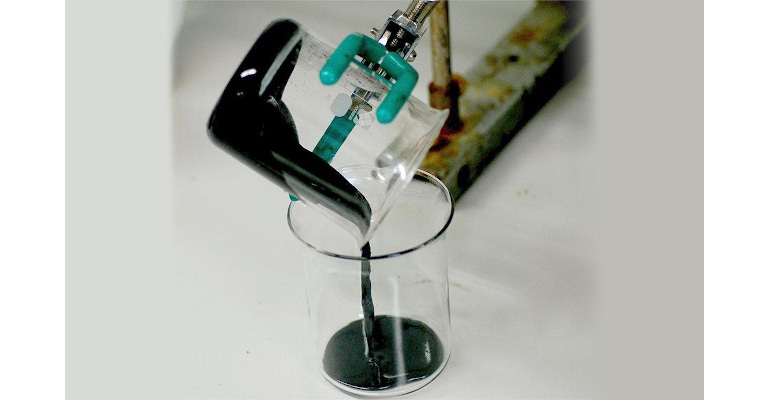Exploring Solvents in Polymers for Next-Generation Printed Electronics
Researchers have discovered that iodine can facilitate the development of a conductive polymer that is compatible with ink-jet-printing.
July 22, 2022

Researchers have simplified the synthesis of a key component of electrically conductive polymers to pave the way for conductive paints and advanced printed electronic components for the development of next-generation devices.
A team from the University of Tskukuba in Japan focused on the investigation of solvents and which ones in particular best facilitate synthesis of polyaniline, an electrically conductive polymer used widely for electronics. In their work they found that a rather common material—that is, iodine—allowed for simple and reliable synthesis of the polymer, paving the way for its use in advanced electronics applications.
Indeed, synthesis of polyaniline for industrial-electronics applications has faced a major limitation for a number of decades in the decision as to which solvent to use to best facilitate synthesis of the polymer. Solvents are typically liquids into which other materials dissolve to make a solution.
Finding one that’s optimized for the process of synthesizing polyaniline can minimize the cost and complexity of manufacturing and make the material suitable for ink-jet printing processes, researchers said. It also can facilitate novel and useful properties in the polymer material, researchers said.
"Polyaniline is an extremely versatile polymer in routine and advanced technologies, but restrictions on which solvents can be used for synthesis have long hindered this versatility," explained University of Tskukuba Professor Hiromasa Goto, one of the researchers on the project, in a press statement. "Our discovery of how to facilitate polymerization in diverse solvents will be useful in basic research and industrial applications."
Solvent Success
The team in particular was seeking solvents that are inexpensive and have low boiling points to best allow the material to be used in versatile polymer processing modes such as ink-jet printing, an application that until now has not been possible, researchers said. They used a procedure to produce polyaniline from aniline sulfate, a method that produced a material that exhibited the crystallinity and electrical properties as if it had been prepared by conventional methods, they said.
"A particularly exciting result is the ease of preparing industrially useful polymer alloys, such as blends with polystyrene or cellulose derivatives," Goto said in a press statement. "Electrically conductive paint, advanced rubber blends, and other materials are now straightforward to prepare, which we expect will facilitate product development in diverse fields."
Moreover, they found in their research that adding a small quantity of iodine to the reaction mixture allowed researchers to produce polyaniline from aniline sulfate in a single step, they said.
Printed Electronics Innovations
Indeed, while many solvents were compatible with the procedure—non-toxic ethanol and dichloromethane, among them—iodine particularly facilitated polyaniline production most likely because it is an electron-acceptor dopant, researchers said. This allows it to facilitate production of localized polarons, which is critical to the subsequent polymerization by radical chain reactions, they said.
Researchers published a paper on their work in the journal, Polymer-Plastics Technology and Materials.
The results of the research should make polyaniline more compatible with ink-jet printing and other useful processing technologies. This should simplify production of printed electronic components, such as circuit boards and other common parts, researchers said.
The research also paves the way for developing both routine and advanced electronics technologies at a lower cost, they said.
About the Author(s)
You May Also Like



